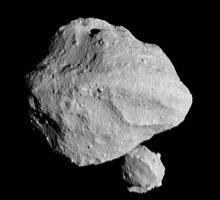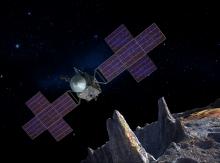Listen to today's episode of StarDate on the web the same day it airs in high-quality streaming audio without any extra ads or announcements. Choose a $8 one-month pass, or listen every day for a year for just $30.
You are here
Scary Asteroids
Astronomers compile catalogs of all kinds of objects: variable stars, black holes, binary stars, and many others. One of their most important catalogs keeps getting bigger — it passed 15,000 entries a couple of months ago.
The catalog lists N-E-Os — Near-Earth Objects. These asteroids and comets follow paths that approach or cross Earth’s orbit around the Sun. Such objects have the potential to hit our planet, so it’s important to find and track them. With enough warning, it might be possible to deflect an object that’s on a collision course.
Most of that work is done by automated searches in Arizona and Hawaii, which scan the sky most clear nights of the year. A new search is scheduled to begin next year in Europe, with another, using a giant new telescope in Chile, to follow soon after.
Scientists estimate that they’ve found more than 90 percent of NEOs that are at least a kilometer in diameter. Such giant space rocks could cause widespread damage if they hit us. In fact, just such an impact is thought to be responsible for the demise of the dinosaurs.
In recent years, searchers have been looking for even smaller objects. Such objects wouldn’t be big enough to trigger global problems if they hit, but they could destroy a city. But smaller objects are also fainter, so it takes much more effort to find them.
So far, the searches haven’t discovered any problems — none of the 15,000 cataloged NEOs is on a threatening course.
Script by Damond Benningfield





